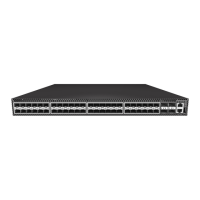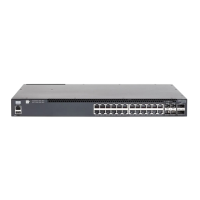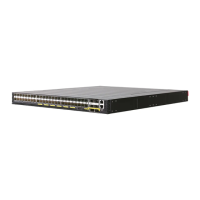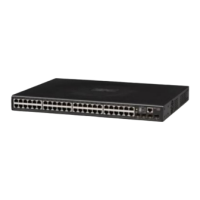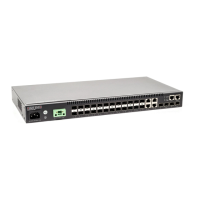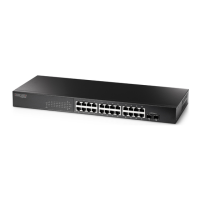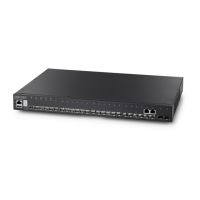Chapter 6
| Port Connections
Copper Cabling Guidelines
– 42 –
◆ Label each separate piece of equipment.
◆ Display a copy of your equipment map, including keys to all abbreviations at
each equipment rack.
Copper Cabling Guidelines
The RJ-45 management port on the switch supports automatic MDI/MDI-X pinout
configuration, so you can use standard straight-through twisted-pair cables to
connect to any other network device (PCs, servers, switches, routers, or hubs).
The connection requires an unshielded twisted-pair (UTP) or shielded twisted-pair
(STP) cable with RJ-45 connectors at both ends.
To ensure proper operation when installing the switch into a network, make sure
that the current cables are suitable for 10BASE-T, 100BASE-TX, or 1000BASE-T
operation. Check the following criteria against the current installation of your
network:
◆ Cable type: Unshielded twisted pair (UTP) or shielded twisted pair (STP) cables
with RJ-45 connectors; Category 5, 5e or better cable for 1000BASE-T
connections, Category 5 or better for 100BASE-TX connections, and Category 3
or better for 10BASE-T connections.
◆ Protection from radio frequency interference emissions
◆ Electrical surge suppression
◆ Separation of electrical wires (switch related or other) and electromagnetic
fields from data based network wiring
◆ Safe connections with no damaged cables, connectors or shields
Table 11: Maximum Twisted-Pair Copper Cable Lengths
Cable Type Maximum Cable Length Connector
1000BASE-T
Category 5, 5e, or 6 100-ohm UTP or STP 100 m (328 ft) RJ-45
100BASE-TX
Category 5 or better 100-ohm UTP or STP 100 m (328 ft) RJ-45
10BASE-T
Category 3 or better 100-ohm UTP 100 m (328 ft) RJ-45

